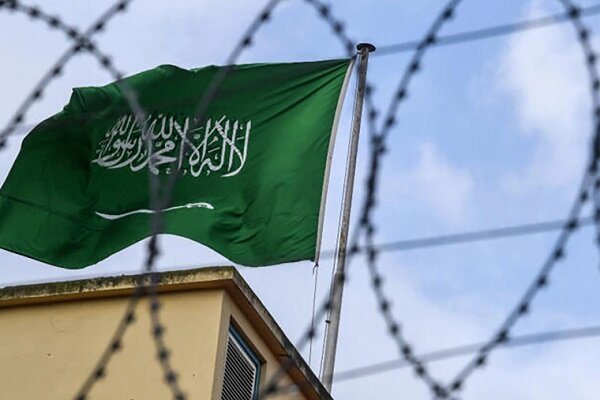The collapse of Bashar al-Assad and the rise of Haiat Taharir al-Sham, the terrorist group as the dominant force of Damascus, transformed the battlefield of regional and regional actors into geopolitical chess boards. In this context, Saudi Arabia is one of the traditional pillars of the Arab world, attempting to navigate between two contradictory poles. On the one hand, they are cautiously approaching a new regime in Damascus, where strategy and orientation remain engulfed in uncertainty. Meanwhile, its silence and passivity fears that it could create a vacuum of forces that was soon filled by rivals such as Turkey, Iran, Qatar, and Israel. This contradiction forms the core of Riyadh’s challenges in post-Assad Syria.
In this context, Saudi Arabia strives to remain at the heart of Syria’s development, aiming to take the pulsation of change and establish itself as an integral player in the future dynamics of the Levant. But this is the important issue. Can Riad simultaneously engage with the Damascus regime and prevent the indirect empowerment of its rivals? This requires navigating through the terrain where every step is a potential mine.
Strategic rivals: From proxies to local power
Today’s Syrian arenas are multi-tiered battlefields where each actor uses specific tools to secure a share of power. In this landscape, Saudi Arabia is forced to tackle multiple fronts at once. First, Ankara not only created buffer zones along the border, by unwavering support for the Syrian Armed Forces (SNA) and controlling major northern regions such as Afrin, Aleppo and Euphrates Shield Zones, but also closely expanded Syrian territory. This strategy leaps the balance of power in the north in favour of Turkey, and obscures Saudi Arabia’s presence in eastern Syria, particularly in areas with an Arab population, such as Deiaezzole and Raqqa. Riyadh fully understands that every square metre of Syrian land under Turkish control reduces traditional influence in the Arab world.
Israel’s expansionist approach to security is one of Saudi Arabia’s major concerns. Israeli airstrikes on Syrian status are just part of the power equation, reporting 70-80% of Damascus’ defensive capabilities. The occupation of Golan Heights and efforts to double the number of Zionist settlers in the area reveal Tel Aviv’s intention to exploit weakened Syria as a launchpad for security and expansionist goals. For Saudi Arabia, these developments demonstrate an increased risk of long-term conflict along Syrian boundaries and a stronger dialogue of resistance. Iran and Qatar are also presenting themselves as rivals, employing asymmetric tools against Riyadh.
Saudi Arabia Strategy: Combining Economics and Diplomacy
To navigate this dangerous maze, Riyadh has adopted three broad approaches rooted in economic, tribal and security aspects. Saudi Arabia is trying to equip economics as a soft power tool. The remains of the 12-year civil war have made Syria a country in desperate need of large-scale financial infusions. Riyadh, which is exploiting this vulnerability, uses generous reconstruction promises as levers to gain cooperation from the Syrian government in the transition. This strategy offers two important benefits: First, Riyadh is positioned as an integral actor in the Syrian reconstruction process. Second, through economic leverage, it can condition the international legitimacy of Syria’s controversial control over its alignment with Saudi Arabia interests.
Meanwhile, in eastern Syria, particularly in the eastern parts of Der Ez Zor, Hasaka and Raqqa, the Arabs have become pivotal players in regional equations. Saudi Arabia builds an informal yet influential foundation of power by establishing direct relationships with tribal leaders and providing financial and logistical support.
Saudi Arabia’s security diplomacy is similar to walking the tightrope. On the one hand, they support the formation of a central government during Syria’s comprehensive transition to resolve the Kurdish problem through peaceful dialogue. Meanwhile, it indirectly supports groups opposed to the influence of Türkiye and Iran. This double diplomacy reflects Riyadh’s efforts to create a “controlled balance of electricity” in Syria.
Structural challenges: Tall barriers in Riyadh
Despite its scope of tools, Saudi Arabia faces structurally rooted obstacles. Short-term engagement with Syrian transitional governments could provide diplomatic manipulation space, but the long-term empowerment of that government could turn into a nightmare for Riyadh.
The rivalry with Qatar also constitutes a kind of proxy war over media and lobbying platforms. While Riyadh enjoys political and economic advantages within the Persian Gulf Cooperation Council, Qatar is leveraging international media like Al Jazeera and investing in civil institutions to promote its own narrative of the Syrian conflict.
Conclusion
In Syria after Assad, Saudi Arabia resembles a player who was forced to travel on multiple chess boards at the same time. On the one hand, they must work with the new Damascus regime to solidify their position as a key contributor to Syria’s reconstruction. On the other hand, we cannot afford to ignore Turkish ambitions, Israel’s expansionist policies, or the potential impact of Qatar. Riyadh’s current strategy appears vulnerable due to the inherent fragmentation of the Syrian crisis.
MP/6423750

